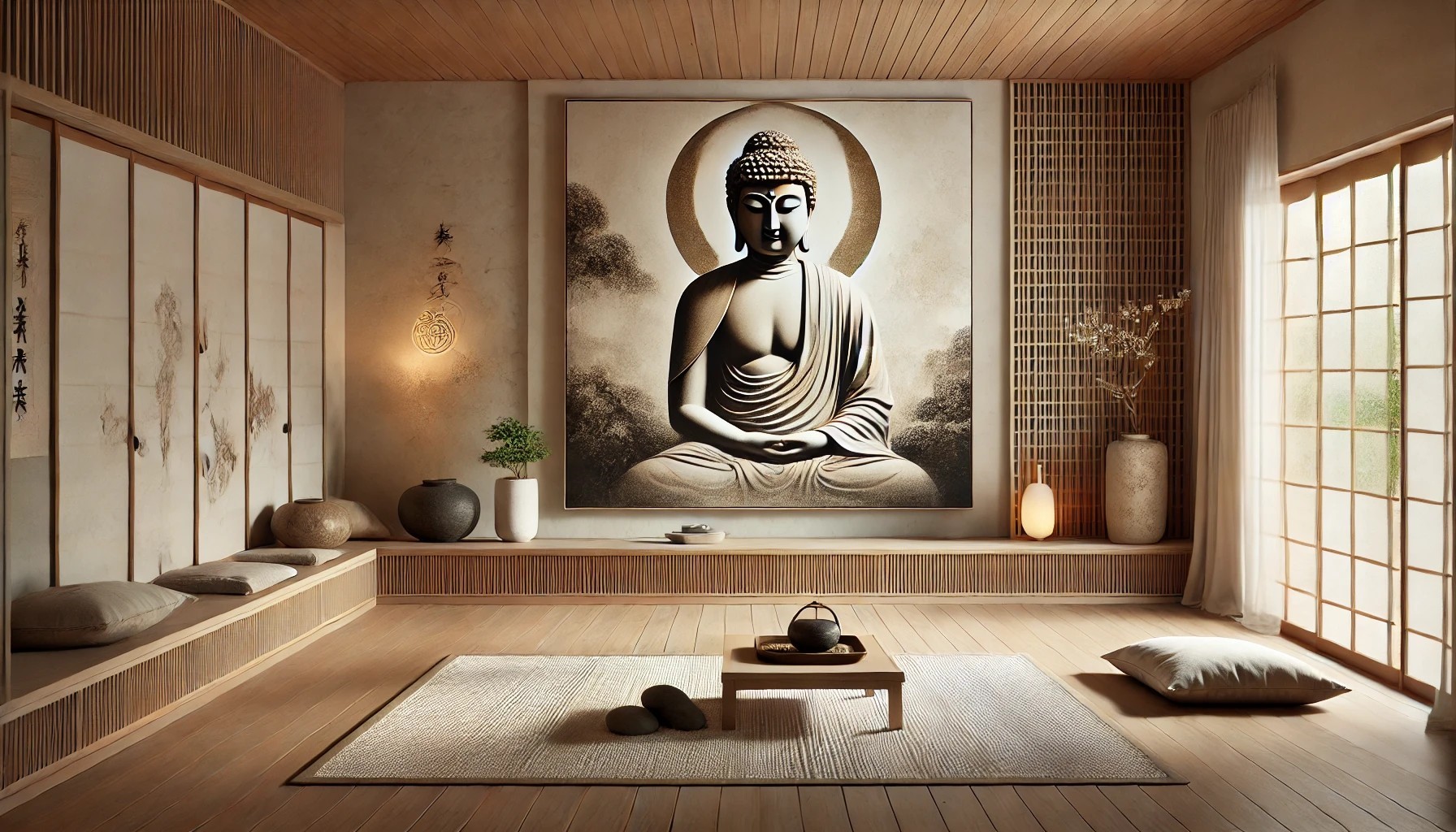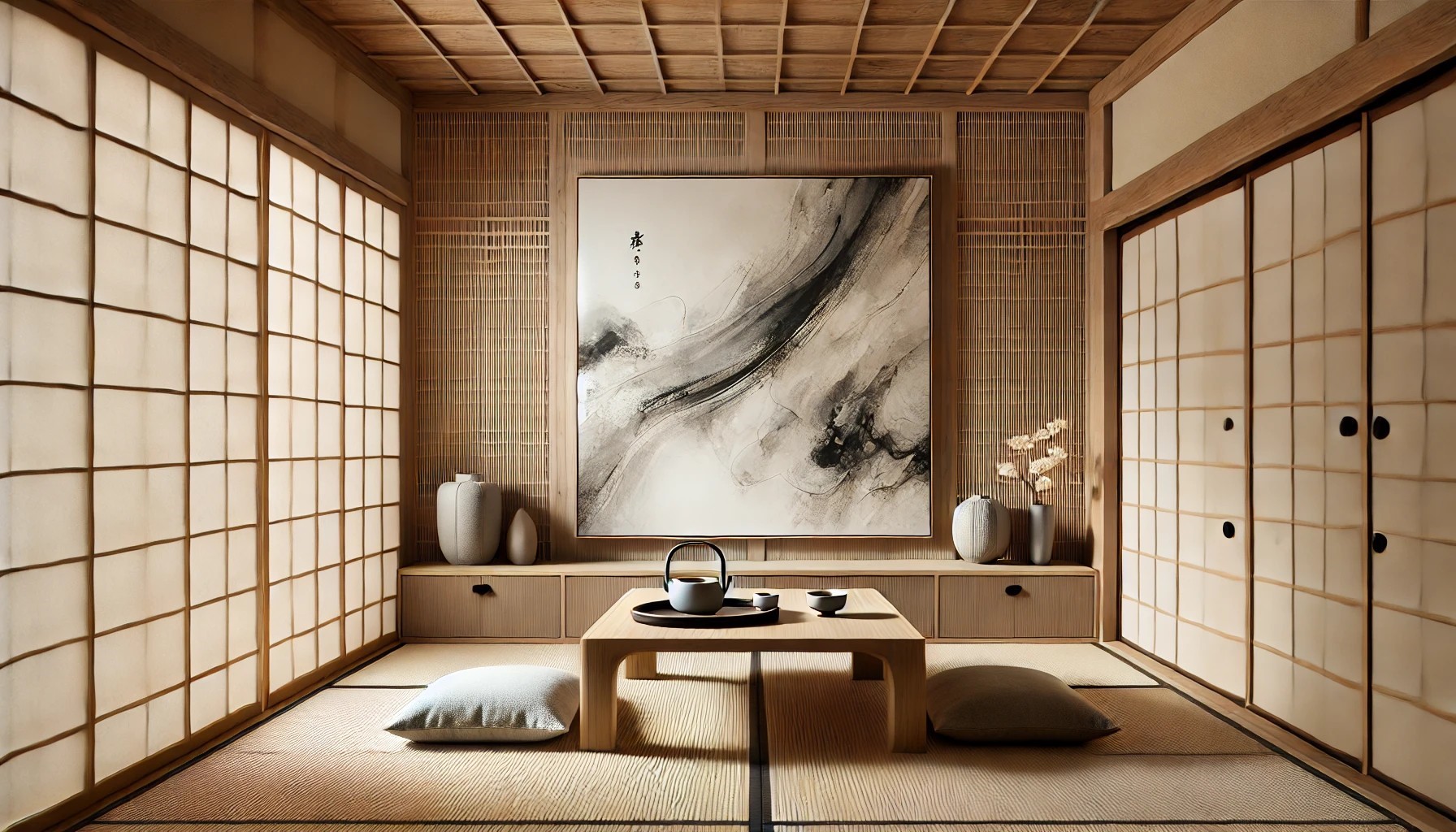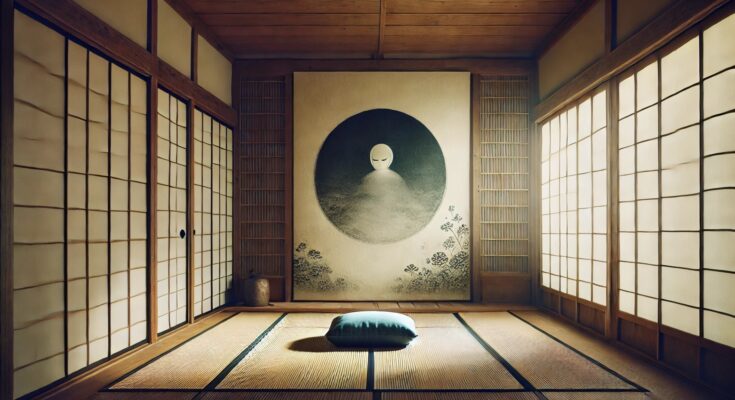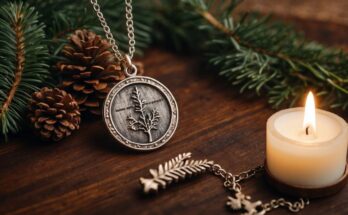Japanese art isn’t just about pretty pictures—it’s like a quiet conversation between people and the world’s hidden magic. For hundreds of years, artists in Japan have mixed spirituality (ideas about more profound meaning and connection) into their work. Let’s break it down!
Buddhism and Japanese Art
When Buddhism came to Japan long ago, it changed art forever. Artists started making statues of Buddha (a spiritual teacher) that looked calm and wise. They also painted mandalas—super-detailed, colorful designs that show the universe. Think of them like spiritual maps! Even modern art keeps this vibe. For example, this abstract Buddha painting uses blurry colors and shapes to make you feel calm, just like ancient art did.
Zen and Minimalism
Zen Buddhism taught artists to say a lot with a little. Imagine painting a bamboo stalk with just one brushstroke—that’s sumi-e ink painting! It’s not rushed; the artist breathes slowly and focuses.
Zen gardens are the same way. They’re just rocks and sand, but they help people relax and think. Even tiny poems called haiku follow this rule: “An old pond… / A frog jumps in— / Splash!” (17 syllables total!).

Nature as a Spiritual Guide
In Japan, nature isn’t just trees and rivers—it’s alive. The Shinto religion says spirits live in mountains, waterfalls, and rocks! Artists show this by painting misty forests or cherry blossoms (sakura).
Those pink flowers only bloom for a week, reminding people that life is short but beautiful. It’s like saying, “Enjoy today because tomorrow things change.”
You might also be interested in learning the connection between home decor and spirituality.
The Influence of Wabi-Sabi
Have you ever seen a cracked bowl fixed with gold? That’s Kintsugi! Instead of hiding breaks, they’re celebrated. This idea (wabi-sabi) says things mustn’t be perfect to be remarkable. A crooked tree in a painting or a lopsided teacup can be more interesting because they’re unique. It’s like saying, “Your flaws make you awesome.”
Japanese Art in Modern Times
Today’s Japanese artists still use these ancient ideas. You might see a neon-lit digital artwork next to a classic woodblock print. Or a dancer moving slowly to show a story (that’s Butoh!). But no matter how wild the art looks, it’s still about mindfulness (paying attention), loving nature, and accepting change. Check out this collection of Japanese artwork to see mixed old and new styles!
Why It All Matters
Japanese art isn’t just for looking at—it’s for feeling. It asks you to slow down, notice little things (like a single flower), and find beauty in what’s temporary or imperfect. Next time you see something cracked, faded, or simple, remember: maybe it’s not broken… perhaps it’s telling a story.
Part 3: Nature—Where Trees Have Superpowers
In Japan, people believe nature is full of spirits called kami. Think of them like invisible friends living in waterfalls, mountains, and even your backyard tree! This idea comes from Shinto, Japan’s oldest religion.
Artists love showing nature’s magic in their work.
For example, old paintings often show misty mountains or cherry blossom trees (sakura). Cherry blossoms are pink flowers that bloom for just a week each spring. They remind people that life is short but beautiful—like how your birthday cake is awesome but gone in two days.
Artists paint them to say, “Don’t wait! Enjoy today!”
Another cool example: ukiyo-e. These are woodblock prints from long ago that show everything from giant waves to geishas (fancy dancers). Even though they’re colorful and busy, they still make you feel calm, like you’re standing in a forest.
Are you concerned about your future? Try our psychic app to guide you about your next strategy.

Conclusion
Japanese art isn’t stuck in a museum—it’s in the way you fix your broken toy with tape, the way you stare at clouds, or the way you keep a seashell because it reminds you of the beach. It’s about finding wonder in ordinary things.




